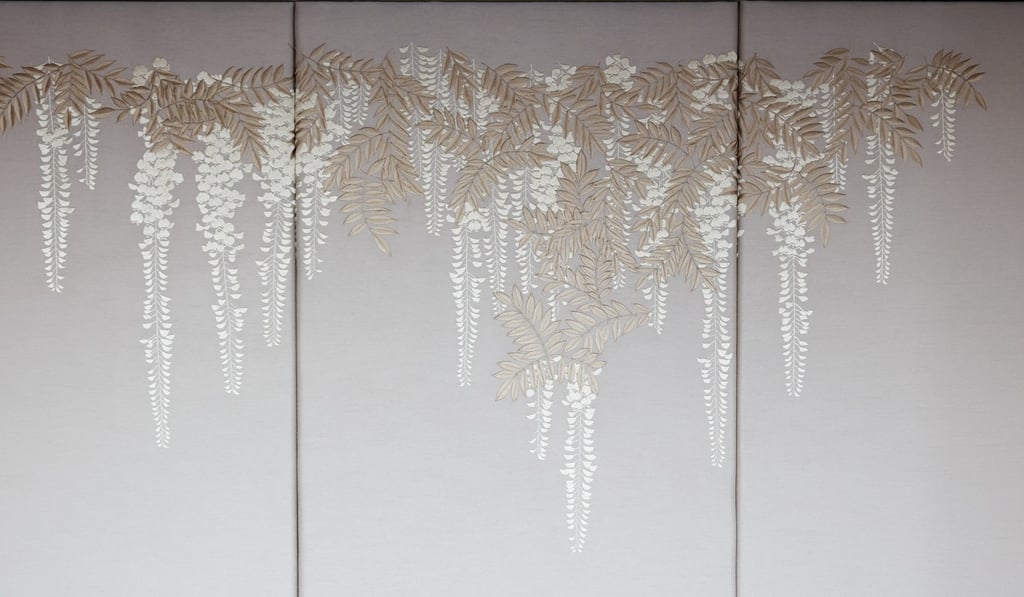How Japanese textile designer Reiko Sudo took the Mandarin Oriental Tokyo back to nature
- Sudo used hand-embroidered headboards, nature-inspired carpets and brocade with ‘Woods and Water’ as a theme
- The designer is committed to promoting Japanese artisans and craftsmen

It’s the details that matter. That expression probably applies to nowhere more than Japan, where crafts are art forms, and their creators given the time to make their magic. Take, for example, the cherry blossom headboards that are part of the recent refurbishment of the Mandarin Oriental Tokyo’s guest rooms. A single bee stitched among the floral cascades completes each piece.
The petals and a second pattern featuring wisteria, meticulously sewn by Mitsuyoshi Kurihara, embellish some of the bespoke Japanese textiles throughout the hotel, from the walls and carpets to the furniture and bedcovers. It took two years for the master embroiderer – who is respected for his decoration of wedding kimonos – to create the headboards, using a special machine that he manipulates by hand.
The project underscores how textiles are crucial to understanding culture. It also shows the value and longevity of a carefully considered interior concept.
When the hotel opened in 2005, acclaimed Tokyo-based textile designer Reiko Sudo of Nuno conceived the interiors visually as a tree, with the guestrooms as branches, and assembled a collection of custom-made fabrics and materials around the theme “Woods and Water”.

To express the spirit of nature in Japan, she used seasonal colours and natural forms such as woven patterns of concentric circles that evoke cross sections of trees.
“The original concept was so strong that there was no need to change it, so we thought about how a tree would grow and evolve; I see it as if it is now in a season of blooming,” Sudo says. As in the original collection, everything was made in traditional dying and weaving workshops in Japan.